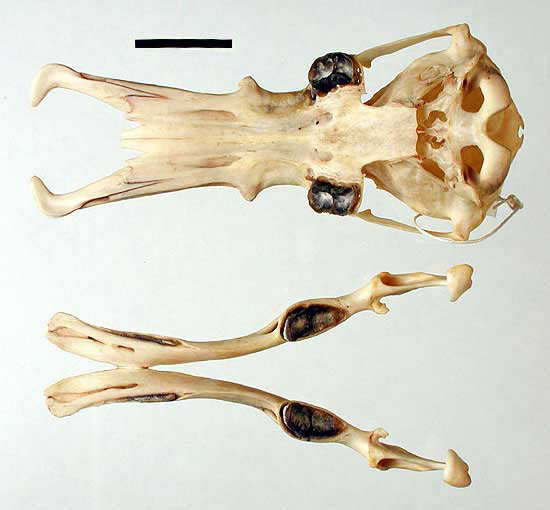 Platypus skull
Platypus skull
TLF ID R7915
This is a colour photograph of the internal skull of a platypus ('Ornithorhynchus anatinus'). This museum specimen displays two components of the skull: the braincase with fused rostrum and the lower jaw. This image has a pale background and includes a black scale line representing 2 cm. Museum identification labels are attached to the skull. (Classification - Phylum: Chordata, Class: Mammalia, Order: Monotremata, Family: Ornithorhynchidae).
